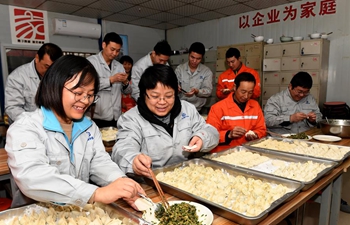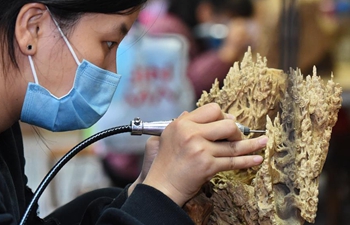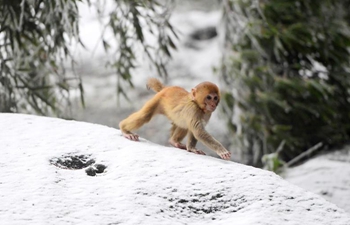WASHINGTON, Dec. 22 (Xinhua) -- Chinese scientists mapped the first complete genome of Himalayan marmots who can survive at altitudes up to 5,000 meters in the Himalayan regions with extreme coldness and scarce oxygen and resources.
The findings, published in this week's issue of journal iScience, revealed the genetic mechanisms underlying high-altitude adaptation and hibernation, which might help researchers to study evolution, highland disease, and cold adaptation.
"As one of the highest-altitude-dwelling mammals, the Himalayan marmot is chronically exposed to cold temperature, hypoxia, and intense UV radiation," said Liu Enqi with Xi'an Jiaotong University Health Science Center in China. "They also hibernate for more than six months during the wintertime."
The researchers sequenced and assembled a complete draft genome of a male Himalayan marmot and re-sequenced 20 other Himalayan marmots, including individuals living at high and low altitudes, and four other marmot species.
The findings showed that the Himalayan marmot diverged from the Mongolian marmot about two million years ago.
The researchers identified two genes which are related to survival in high-altitude populations under conditions of extremely low oxygen. One of them may have neural protective role and the other helps prevent the excess growth of new blood vessels under extremely low-oxygen conditions, according to the study.
They also compared gene-expression differences between marmots in a state of torpor and those awake marmots. It showed that gene-expression changes occurred in the liver and brain during hibernation.
Because the hibernator's brain is exposed to near-freezing temperatures and has decreased blood flow, there is an increased risk of blood clots. Therefore, their brain stem cells are better equipped to repair injuries as an adaptation to survive the coldness.

















